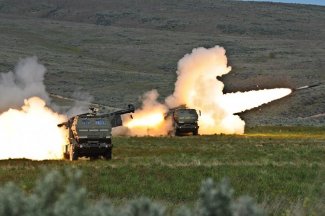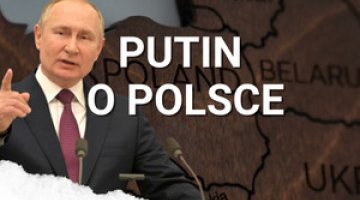Ukraine’s first attacks on Russian territory with Western weapons. Day 831 of the war

![]()
There has been no significant change in the position of the warring parties over the past week. The main focuses of the fighting are in the vicinity of the villages of Lyptsi and Vovchansk in Kharkiv oblast, Chasiv Yar, and the front line in Donetsk oblast from the area of Marinka to the Ocheretyne region. The Russians do not as yet have the reserves they need to be able to commit in the Kharkiv direction to cross the Vovcha river and capture Vovchansk. There are many indications that an operational pause has been taken in the Donbas, and that the invaders’ attacks are mainly aimed at reinforcing the advanced wings. The Russian offensive operations along selected sections of the frontline in Donetsk oblast will probably be stepped up in the coming weeks.
![]()
On the night of 31 May-1 June, the Russians attacked Ukraine using 53 cruise and ballistic missiles of various types and 47 Shahed 131/136 drones. Ukrainian air defences shot down 35 missiles and 46 drones. Energy infrastructure facilities in the Zaporizhzhia, Dnipropetrovsk, Donetsk, Kirovohrad, Vinnytsia, Lviv and Ivano-Frankivsk oblasts were hit, including two thermal power plants. Last week, periodic power cuts were enforced across the whole of Ukraine; the situation will not improve during this week either.
Due to the damage to the Dnipro Hydroelectric Power Station dam, which has been the target of Russian attacks since March this year, it was shut down on 1 June after being hit again. The road leading through the dam is the main route linking the centre of Zaporizhzhia with the right-bank part of the city, and its closure means a serious impediment to transport.
The Russians are continuing to shell the border regions of Kharkiv and Sumy oblasts, using S-300 missile systems among other weaponry. A missile attack on residential buildings in Kharkiv on the night of 30–31 May killed at least nine civilians.
![]()
The first reports have come in of HIMARS systems firing on Russian air defence positions near Belgorod. In recent days, the US and several other Western countries have authorised the limited use of the weapons they have donated against military targets located in Belgorod and Kursk oblasts.
On the nights of 29/30 and 30/31 May, the Ukrainians carried out a series of combined attacks on Crimea and Krasnodar krai using ATACMS ballistic missiles, Neptune cruise missiles and air & sea strike drones. Damage was caused to the port infrastructure in the Kerch Strait, including the oil terminal at the port of Kavkaz and the ferries which ‘supplement’ the Crimean Bridge, as well as elements of the power grids on land. These attacks are a further element of the Ukrainian operation aimed at paralysing Crimea as a logistical base for the Russian army in southern Ukraine.
![]()
Thanks to the activation of aid from the US, the acute ammunition crisis in the Ukrainian artillery has been partially resolved over recent weeks, although shells are still being rationed and it cannot be said that the needs of the frontline are being fully met. The situation in terms of 155-mm ammunition seems to be better, but there is still a significant shortage of shells for Soviet-calibre weaponry (122- and 152-mm). According to the Czech foreign ministry, the first shipments of artillery ammunition purchased as part of the international coalition coordinated by Prague are due to arrive at the front in June. These deliveries are expected to include batches of between 50,000 and 100,000 shells per month. If these announcements turn out to be true, then – taking into account the assistance from other countries and Ukraine’s own production – the artillery of the Ukrainian Armed Forces will have been provided with the minimum amount of ammunition they need to effectively conduct defence during the second half of 2024.
On 30 May, the Office of the Prosecutor General of Ukraine reported that 775 convicts had joined the military. The courts received more than 2400 applications for parole from serving their sentences in exchange for military service, of which around 75% were granted. Earlier, the justice ministry confirmed that more than 4000 inmates had expressed their willingness to join up.
On 2 June, the Ukrainian defence ministry reported that some 1.5 million Ukrainians subject to military service had updated their personal data at military commissions. More than 400,000 of those registered were granted deferments, reserved by their workplaces or declared unfit for military service.
On 31 May, Ukraine and Russia carried out their first exchange of prisoners of war (on a 75-for-75 formula) since February. This was made possible through the mediation of the United Arab Emirates.
On 3 June, the Poltava district court seized the documents of the district military medical commissions of Poltava oblast. Earlier, the National Anti-Corruption Agency had established that there was a suspicion that bribes had been taken for the issuance of false certificates. This is indicated by the high percentage of people declared unfit for military service (around 30%).
Also on 3 June, deputy defence minister Dmytro Klymenko stated that almost all the drones currently used by the armed forces are being made in Ukraine, with private businesses having the largest share in this sector. He added that a tender for the purchase of 20,000 drones had recently been announced at a cost of 3 billion hryvnias (about $75 million). So far, about 7000 have been contracted for delivery.
![]()
On 28 May, the Ukrainian military intelligence (HUR) reported that the Russians are stepping up their recruitment of mercenaries to fight in Ukraine. This includes countries in Central Africa, particularly Rwanda, Burundi, Congo and Uganda. Mercenaries are being offered $2000 for signing a contract, a $2200 monthly salary, medical insurance and a Russian passport for the soldier and members of his family.
![]()
On 28 May, the Netherlands announced an initiative to arrange the transfer of a single Patriot air defence system battery to Ukraine. The initiative is aimed at countries that have few such systems and cannot afford to donate an entire battery, but only those components that would eventually make up a whole battery. So far, no country has signed up to participate. On the same day, Lithuania announced that it would donate €35 million to the Czech initiative to purchase artillery munitions for Ukraine.
On 29 May, Sweden announced its largest military support package to Kyiv, worth €1.2 billion. It includes two Saab 340 Erieye early warning and command aircraft, the entire stock of Pbv 302 armoured personnel carriers (Stockholm had 260 vehicles stockpiled in 2022), 155-mm artillery shells and AiM-120 AMRAAM air-to-air missiles. At the same time, Sweden’s defence minister said he was putting on hold the previous plans to send JAS-39 Gripen fighters to Ukraine in order not to complicate the deployment of F-16 fighters, as requested by its Western partners. The Saab 340 Erieye aircraft will allow Ukraine to detect air threats more easily, to better coordinate its aviation activities with air defences, and multiply the efficiency of its air forces. Given the time it will take to train the crew and deploy the successors to these aircraft in the Swedish Air Force, the deliveries of Saab 340 Erieyes to Ukraine will probably not take place until late 2025 or early 2026.
On 28 May in Lisbon, President Volodymyr Zelenski and the Portuguese prime minister Luís Montenegro signed an agreement on security cooperation. Lisbon’s military support will amount to at least €126 million this year. Portugal also confirmed it would participate in the coalition of countries training Ukrainian pilots on F-16 fighter jets, in a coalition for maritime security, and in a programme to acquire large-calibre ammunition.
On 31 May, during the Ukraine-Nordic summit in Stockholm, the Ukrainian president and the Swedish prime minister Ulf Kristersson signed an agreement on security cooperation. Swedish military and civilian financial assistance for the period 2022–2026 will reach at least €9.2 billion. Sweden will continue to contribute to the reconstruction of Ukraine, and to support its reforms and preparations for future membership of the EU and NATO.
On the same day, a similar document was signed with Norway. By the end of this year Oslo will provide at least €1.2 billion in military aid; the total financial support between 2023 and 2027 will amount to €6.4 billion. According to the agreement, Norway and its allies will assist Ukraine in developing its options in modern combat aircraft and enhancing its naval capabilities in the Black Sea and the Sea of Azov.
Kyiv has concluded yet another security cooperation agreement with Iceland. The country has pledged to provide comprehensive and long-term economic, humanitarian and defence support to Ukraine, as well as to promote its future membership of the EU and NATO. Iceland will provide Kiev with at least €26 million annually between 2024 and 2028. Reykjavík has pledged to continue delivering supplies and military equipment from NATO countries to Ukraine via chartered transport aircraft.
Ukraine has now concluded 15 security cooperation agreements: with the UK, Germany, France, Denmark, Canada, Italy, the Netherlands, Finland, Latvia, Spain, Belgium, Portugal, Sweden, Norway and Iceland.
On 3 June, the UK and Latvia jointly announced a tender to supply thousands of FPV drones to Ukraine as part of the Drone Capability Coalition, whose participants include Australia, Canada, Denmark, Estonia, Germany, Lithuania, the Netherlands, Poland and Sweden. Companies have until 28 June this year to submit their bids, which will then be reviewed and evaluated by the coalition members, and the winner will be awarded the contract.






